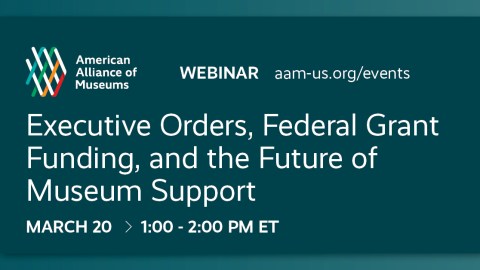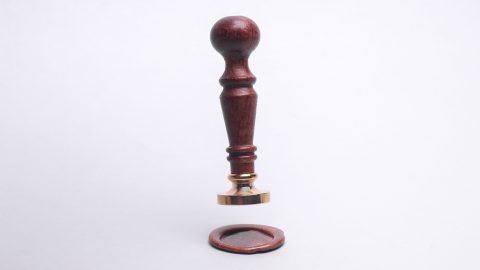
Some years ago, shortly before I assumed the directorship of the Ringling Museum of Art—the state art museum of Florida—the leader of the Florida Legislature declared, “I love Rubens.” The Ringling was widely known for its rare and valuable paintings by the Flemish master Peter Paul Rubens. Five of them measuring some fifteen-feet high adorned one of the most majestic galleries of any American cultural institution. At that time, the museum had been struggling from financial neglect, with decades of deferred maintenance having forced the Ringling mansion to close for a desperately needed renovation. The art museum’s roof leaked during Sarasota’s frequent tropical deluges. Staffing was thin and a patchwork of state and community support, absent an endowment of any meaningful corpus, barely met annual operational needs. There was no surplus left to address physical damage to the buildings, placing the museum’s magnificent collections of Old Master art, circus memorabilia, and archival treasures in pending peril of the next tropical storm or hurricane. So, as the Ringling made its annual case for fiscal support to the Legislature of Florida, the Speaker of the House declared to the local newspaper, “I love Rubens,” to which he added, “It’s my favorite sandwich…If the people of Sarasota want money for their museum, they can sell their Rubens to pay for it.”
Using the proceeds from collection sales to fund operations or capital projects is prohibited in the museum field, a necessity whose urgency comes from the forbidden fruit of fiscal convenience: the temptation that museums hold objects in their collections of such monetary value that they could address almost any financial challenge. Sell collections, solve crises. Easy, except it is not, as the sale of collection objects—especially the most valuable—depletes the museum of its very reason for existence and violates the fundamental fiduciary responsibility of the museum’s governing body to preserve its treasures for future generations. True, there are those who argue that certain crises at given museums may be so dire that they require the museum to sell collections to survive. But this argument, while on its surface an alluring appeal to compassion and understanding, is in substance little different from a cannibal asserting the irrefutable nutritional value of human flesh. Yes, it may work, but no, we should not do it.
In his landmark article “The Deaccession Cookie Jar,” the late Stephen Weil articulated a lucid and compelling case against the sale of collections to fund operations. I have little to add to his work here, other than to assert through my personal experience that the crisis of funding that led the Florida legislator to propose a fire-sale of Peter Paul Rubens masterpieces to underwrite the state museum—a plan that would have left the museum bereft of its greatest treasures—turned out to be altogether unnecessary. Within a year, the Ringling merged with a state university, secured funding from a variety of sources (including the legislature), and commenced an endowment campaign, leading to a renaissance of renovation, expansion, public support, increased visitation, and, ultimately, fiscal health. Institutions that sold collections to survive, I submit, have not fared as well. If you disagree, name one.
Through the Code of Ethics of the American Alliance of Museums (AAM) and the professional standards of respected discipline-specific bodies such as the Association of Art Museum Directors (AAMD), the American Association for State and Local History (AASLH), the Society for the Preservation of Natural History Collections (SPNHC), and quite a few prominent others, the museum field has generally succeeded in maintaining its prohibition against inappropriate uses of deaccessioning funds.[i] Museum professionals respect such standards, and governing boards understand the ethical demarcation, even if some board members might crave the financial quick-fix of “monetizing collections.” So, despite the occasional high-profile tests of this ethical boundary—thankfully, usually at the periphery of the museum field—the concept of selling high-end, valuable collection objects to fund operations has not taken hold.
Our Problem of Plenty
My concern, however, is at the opposite end of the collecting spectrum: not the high-profile and financially valuable collection objects that inspire the public and pique the cravings of private dealers and auctioneers, but the forgotten, neglected, seldom-used, and rarely studied objects that populate the drawers and shelves and hanging racks of museum storage facilities. Board meeting to board meeting, year to year, decade to decade, museums collect. Donations encouraged by the tax code, endowments restricted to the purchase of art or historic artifacts or natural specimens, and the ambitions of curators and directors together create pressures on museum collections to expand, over time stretching the capacities of galleries to display these objects or even storage vaults to hold them. Registrars struggle to maintain adequate records and location files. Not everything can be photographed for online databases, given limited staff and resources, meaning the public is deprived of information on museums’ collections—never mind access for study or enjoyment. Seldom-used objects, in their volume, divert resources from the objects most vital to the museum.
In this sense, deferred deaccessioning is the deferred maintenance of museum collections. The work can be postponed one year to the next, and then the next, onward indefinitely without noticeable consequence, until it cannot. Put another way, it is like an open spigot flowing water into a bathtub that, whatever its water level may be now, will eventually cause a damaging flood if the spigot is not turned off, or else someone pulls the drain plug. At some point, storage facilities reach capacity and unsafely crowded conditions threaten the collection under care, preventing or severely restricting the museum from acquiring anything more—no matter how desirable—until substantial sums are spent on new facilities or the exorbitant rent of museum-quality off-site storage. Strong, healthy, vibrant museums should not do this. But all too often, they do.
This is where the ethics of deaccessioning matter. In the interest of preserving the prohibition against selling collections to fund operations, our field has come to place its “bright line” at a position which discourages even healthy deaccessioning. This means museums are careful to avoid any perception that they could be misusing deaccession funds, and generally do not reimburse themselves for the direct cost of deaccessioning itself. They recognize the cash received from the sale of objects on a gross basis, without deducting all of the costs they incurred to earn that money. They might deduct shipping costs to transport the objects to auction, or even the costs of crates to transport them safely, but they tend not to recognize their own internal costs (especially labor) necessary to conduct the deaccessioning process in a legal and ethical manner.
I recently saw on the desk of a fellow museum director—one of the best I know—a binder of estimates from a major auction house bearing proposals for the sale of unwanted works of art from the university’s collection. The pieces had not been displayed nor researched in recent memory but were taking up prominent and precious space upon painting racks, shelves, and flat files in the museum’s overcrowded storage facility. What was holding up progress? There was no one on staff with the available time necessary to research the pieces to authenticate ownership, verify provenance, and determine donor intent. There were also no extra funds available to hire a student or part-time assistant to do such work—notwithstanding the educational value that such a project might provide.
It takes time and labor to prepare objects for deaccessioning. Every proposed object must be researched for legal ownership, to determine whether donor intent even allows for dispersal, and to make informed judgements on whether each object really should be disposed. This may mean provenance or historical research, investigation into title, and possibly legal procedures for abandoned property (as some museums store objects that had been left off, for some undocumented purpose, decades before). The process may also require assessments by independent experts, appraisers, or other third parties who could require fees and expenses for such services.
This is among the most thankless, unglamorous tasks any museum can pursue. At institutions abuzz about the next dazzling exhibition, news-making acquisitions, popular family programs, or even scholarly publications, the painstaking work of sorting through unwanted collections normally assumes a place on the priority list somewhere very near dead last. What is worse, under current practice we expect museums to subsidize the staffing costs of de-accessioning. To change this status quo, we must publicly recognize what we already know: that the work required to deaccession collection objects is not generally part of normal museum operations. Each proposed piece for deaccessioning poses a special project that normally would not be pursued unless the time, money, and skilled labor were available for such a targeted purpose. The good news is that we can make such funding accessible with little more than a clarification of existing deaccessioning guidelines.
Direct Costs for Deaccessioning
The principle of “direct cost” has long been recognized in managerial accounting and is straightforward to track. It is the cost of what one must spend to do a certain project, such as deaccessioning. It would include the cost of building crates, shipping expenses, and any other expenditures needed to sell a deaccessioned work. It would also include the time value of people who work on the project, normally tracked on an hourly, daily, or weekly basis depending on non-related duties the person might also pursue. Providing it maintains accurate records, a museum can reasonably calculate the direct cost of deaccessioning any item, or cumulatively, by simple addition, arrive at its annual cost of deaccessioning.
“Indirect costs” include more subjectively determined expenses, such as the appropriated cost of the building, heating, cleaning, and security for the space in which the activity takes place. “Overhead costs,” such as an allotment for management and administration, are also considered indirect, as they are very hard to measure and ultimately subjective. Some might wish to add “indirect costs” onto the expenses incurred for deaccession, but I would avoid this for now, as it might open the door to loading normal operational costs onto a deaccessioning project (particularly in times when budgets are tight). Perhaps we might leave this to the museum associations to adjudicate over time.
So, my proposal is simple and straightforward: recognize a museum’s direct costs of deaccessioning as a fair use of funds raised by the sale of deaccessioned works. Under this concept, funds earned through such sales could be utilized for the labor and other costs required to deaccession collection objects (either to reimburse the costs of selling a particular object or to prepare other objects to be considered for future deaccessioning). In time, this process should form funding pools that could provide museums the necessary resources to prune their collections. This would modestly widen our understanding of the current restriction on the use of proceeds from the sale of deaccessioned objects, but in a manner that reinvested in the collection itself. Beyond merely the purchase of new works, access to these proceeds would allow museums to invest in the welfare of existing collections by creating a means to decrease the number of objects in the museum’s care and, thus, reduce the museum’s time, labor, and expense of tending to objects that it does not really need. The resource can be self-perpetuating, as funds raised from the sale of deaccessioned objects can be reinvested in the process of considering more objects for deaccession. And so on, and so on…
Direct Costs for Conservation
For many museums, one of the most cost-effective sources for collection-quality objects can be found at a site extraordinarily close to home: their own storage facilities. As years go by, museums accumulate objects that are worthy of public display but cannot be used because of their physical condition: paintings whose image has been obscured by the accretions and discolorations of time, textiles needing backing support to be mounted on gallery walls, artifacts in need of repair before they can be safely presented or adequately appreciated by viewers. Once treated by conservators, such collection objects reclaim their public worth and so may contribute again to the public interest.
If the funds acquired by the sale of deaccessioned objects can be spent to acquire new collection objects, then use of such funds to conserve pieces that otherwise could not be utilized seems to serve an identical purpose, and should be considered a form of acquisition. One could argue that such “acquisitions through conservation” may be more cost-efficient than purchase on the open market. The transaction cuts out commissions paid to dealers or auction houses, while the direct costs of conserving worthy objects may be far less than the purchase price of comparable pieces. Through this process, the value of one object “lost” from the collection by deaccessioning can return as another object “found” through conservation. In practical terms, the conserved object is like a new piece, and so I would suggest that the cost of conservation treatment provides a fair use practically indistinguishable from the cost of purchasing a new object.
Administratively, calculating the direct costs of conservation should be little different than for deaccessioning. Many conservation labs already account for the time and material costs of treatments. They keep treatment logs that carefully track hours spent and, in many instances, have already established fair rates for in-house treatments (as opposed to higher hourly rates that may be charged to private collectors). For museums that outsource conservation to regional or private conservation labs, those costs plus necessary preparation and shipping constitute the direct cost of conserving such objects. As in the more generic example of general deaccessioning, there may be indirect costs involved in this process, such as the general expense of operating a conservation lab or membership dues to participate in a consortium. I would exclude those add-ons; others may feel differently.
Direct Costs for Sharing
We all know that there are museums of plenty that own collections in such depth and volume that some of their treasures have little chance of ever appearing on public view. Certain objects may be requested by a scholar to examine every now and then, but infrequent study seems hardly worth the opportunity costs of withholding such works from museums that would gladly put them on public display. Conversely, I know of very few museums that cannot identify “gaps” in their collections. The stories their objects tell often lack a few key pieces or artifacts that might enhance a gallery or elevate a display. For example, a museum in a large city may have little reason to display work by an artist whose local community museum might treasure the piece and display it proudly. A lesser work by a major artist might languish in storage when it could represent an entire artistic movement in the gallery of a museum of lesser means. This logic extends to history, natural history, and other kinds of museums as well.
If a museum’s own storage facility can provide a valid place to “acquire” work through conservation, then the storage facility of another museum should represent an equally qualified source. The direct costs of due diligence to release the work from one museum’s fiduciary care and transfer it to another should certainly be recognized as a fair use of deaccessioning funds, as should packing, shipping, and transportation expenses to relocate the piece to its new home. Whether these expenses be paid by the giving or receiving institution, or otherwise shared, hardly seems to matter. Practice may determine what works best.
Sanctioning direct costs for sharing would also help facilitate one especially important activity confronting major collecting institutions today: the repatriation of illicitly acquired works (such as Nazi-era objects) or objects which might have been forcibly extracted from their cultures (i.e., decolonization). Such initiatives—whether motivated by law or ethics or both—require the same due diligence, provenance research, and logistical support as common collection deaccessioning. Reaching just and informed decisions should not suffer delay due to a shortage of resources, especially when the disposition of such objects goes to the very heart of a museum’s values and ethics. Particularly with proceeds from deaccessioning already earmarked to enhance museum collections, the act of cleansing collections of forcibly or illicitly acquired objects seems, at least to me, fair and appropriate.
A Minor Guideline for a Major Benefit
What would be required to make this proposal happen? Administratively, very little. It is unlikely that any major museum association would need to rewrite its rules and ethical codes. Rather, all this proposes is a clarification of what constitutes restricted deaccessioning proceeds. It allows a museum to reimburse itself in full for the direct costs of deaccessioning a work, using the proceeds that the object earns at market once sold. A museum could also utilize proceeds from previously deaccessioned works (otherwise reserved for the purchase of new collection objects) to underwrite research and related costs pertaining to objects to be proposed for deaccessioning. As for those few cases when the due diligence process does not lead to deaccessioning (for instance, discovery of a donor restriction or failure to receive the necessary approvals), I would propose that a good faith effort to conduct research for the purpose of deaccessioning—regardless of result—should qualify as appropriate use of deaccessioning proceeds.
Second, this proposal modestly broadens acceptable sources for new acquisitions. It offers an alternative to retail outlets of dealers and auction houses to include conservation specialists who, through their science and skill, can bring objects into a museum’s active collection from an otherwise unusable state. Additionally, it recognizes that sharing objects with other not-for-profit institutions imposes a modest cost that, in fairness, could be offset by gains accrued from the sale of other deaccessioned objects.
All of this proposed activity—the research and logistics of deaccessioning objects, conservation, and collection sharing—enhances a museum’s collection to benefit current and future generations and so maintains in full the spirit of deaccessioning ethics. By removing objects that have no vital or active use, the museum gains space for the safe storage of objects more central to its mission and diminishes its liability of care for unwanted objects. The basic premise of deaccessioning ethics still stands: that funds attained through the disposal of deaccessioned objects be utilized toward the replenishment and improvement of the museum’s collection.
Though the sale of minor works may hardly raise enough money to pay the direct costs of their own deaccessioning, the hope is that disposal of some objects would raise funds in excess of their costs, contributing to a pool of resources necessary to support conservation or collection sharing. None of this, of course, hinders the use of such funds for purchasing collection items or investing existing resources into the labors of provenance and title research or third-party consultation. For many museums, however, such funds would be vital even to commence the process of pruning collections in a manner that honors museum ethics and the public trust. It could help create jobs, fellowships, and paid internships to do the work required to liberate ever-decreasing storage space from the clutter and accumulation of collecting over time. In reclaiming existing capacity, museums might defer the cost of renting or building new storage space, plus the cost of specialized storage equipment. Sadly, such deaccessioning would do little to salvage the fortunes of museums in distress, but that is not what the collections were acquired to do anyway.[ii]
Moderate though the adoption of this proposal may appear, its implementation would see a substantial shift in the values of museum collecting. In decades past, when relatively young museums in America were actively acquiring to form the very substance of their collections and establish the character of their reputations, possession defined excellence. Now, as years of acquisition have piled upon more years—and the space, labor, and expense of accumulation have accrued to levels too great to ignore— “having” seems more like “hoarding,” and standards of collecting excellence must surely shift from possession to mission-supporting use. This constitutes a shift of values, a redefinition of prestige, and a test of institutional will. Through this modest proposal, I hope that those who embrace this shifting paradigm might have the resources necessary to succeed.
[i] Editor’s Note: Though some organizations restrict their definition of ‘appropriate’ use of deaccessioning funds to acquisitions alone, others, including AAM and AASLH, give wider latitude, allowing for uses like direct care.
[ii] There is a school of thought among a few museum leaders that museums with such spectacular collections as to run out of wall space to display all their treasures should be allowed to sell some pieces to reinvest into educational programming or restricted education endowments. Deaccessioning proceeds would fund “mission-centric” operations as opposed to administrative overhead, repaying institutional debt, or the repair of old buildings. It is a serious, attractive proposal, generous in its reach toward the local community, but—at least to my eye—myopic in the license it presents to virtually any struggling museum facing a challenging fiscal year. University museums could see whole collections liquidated to fund academic departments. Perhaps more judiciously, just sell a few objects to pay for educational programs and balance the annual budget. Not too much human flesh, just a little to help us get us by. We can do better.
About the author:
John Wetenhall, an AAM member, is founding director of the new George Washington University Museum and has taught in GW’s museum studies graduate program. A longtime museum director, he has served on the boards of AAM, ICOM-US, and AAMG. Having earned his doctorate in art history and later an MBA, he is currently writing on the values, ethics, and “business” of museums.
Should “direct costs” be an acceptable use for deaccessioning funds? We want to know your thoughts! Let us know in the comments, or pitch us your own article on the topic.









I’m really intrigued by this proposal. I’ve worked for three history organizations suffocated by unused, low-value collections objects taking up storage and resources. As Rainey Tisdale et al. wrote in the “Active Collections Manifesto” (www.activecollections.org/manifesto), “We need to make it easier for museums to deaccession their collections while preserving the public’s trust.” This might be one way to do that.
My question is: who decides whether it’s acceptable/ethical to interpret “proceeds from the sale of collections” as meaning NET proceeds? Does the AAM support this intepretation? May we deduct the labor costs of deaccessioning from the proceeds before applying those proceeds only to new accessions or direct collections care?
Small history organizations need a verdict. AAM, what do you say?
This is a very interesting and important article. This practice could function as a deterrent against piling up objects that are not align with the mission and collection of the institution.
Directors and curators should champion this message, but I think that realistically registrars and collections managers are the real advocates since we deal directly with the consequences of overflowing storage spaces and lack of conservation funds.